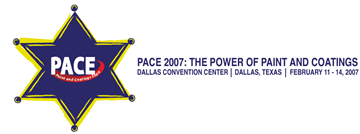Search
Individual Conference Papers
View as
Sort by
Display
per page
Truth or Marketing? Hocus Pocus or Real Information? How are You Selecting Products for Your Projects?
Product Number:
51220-248-SG
Publication Date:
2020
$20.00
Tungsten Carbide High Velocity Thermal Spray Coatings in the Oil & Gas Industry
Product Number:
51216-006-SG
Publication Date:
2016
$20.00
Turning Repairs into Profits: Using Epoxy Patching Materials on Your Next Re-Paint Project
Product Number:
41207-385-SG
Publication Date:
2007
$20.00
Two Coat Inorganic Coatings System for Corrosion Resistance and Long-Life
Product Number:
51324-21092-SG
Publication Date:
2024
$40.00
Two-Coat Low VOC Maintenance System for DoD Aboveground Storage Tanks
Product Number:
41205-168-SG
Publication Date:
2005
$20.00
Two-Coat Polyaspartic Urethane Coatings Protect Virginia Steel Bridges for Over a Decade
Product Number:
41216-994-SG
Publication Date:
2016
$20.00
Two-Way Application of Corrosion Inhibitor in Gas and Condensate Field
Product Number:
51320-14398-SG
Publication Date:
2020
$20.00
Two-Year Atmospheric Corrosion and Accelerated Corrosion Test: A Comparative Study
Product Number:
51315-5957-SG
ISBN:
5957 2015 CP
Publication Date:
2015
$20.00
U.S. Perspective On Harvesting And Archiving Of Aged Components To Improve Materials Degradation Knowledge And Inform Aging Management
Product Number:
ED22-17113-SG
Publication Date:
2022
$20.00
UHP Waterjetting – the Oldest - New Method for Surface Preparation
Product Number:
51220-233-SG
Publication Date:
2020
$20.00
UHP Water-Jetting and Surface-Tolerante Coatings in New Building Applications
Product Number:
51217-035-SG
Publication Date:
2017
$20.00
ulti-Axial Fatigue Initiation Testing and Specimen Characterization of 304 Stainless Steel
Product Number:
ED22-18372-SG
Publication Date:
2022
$20.00












